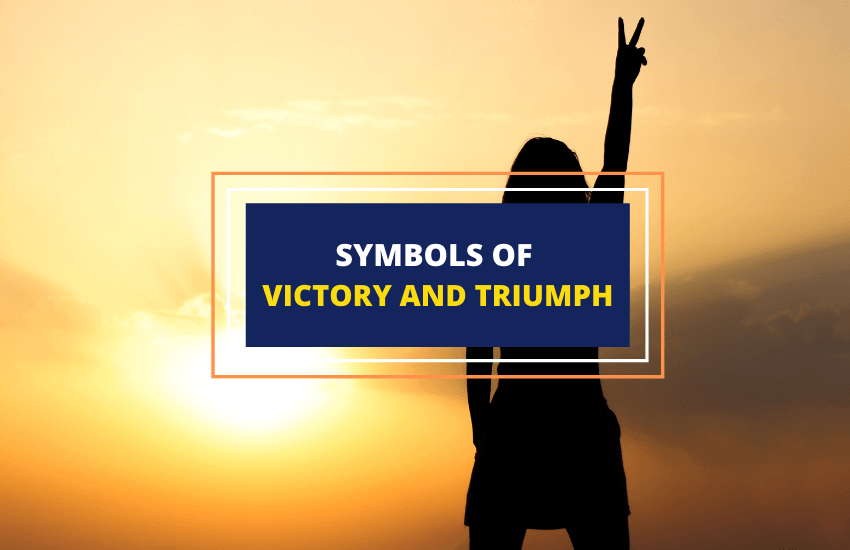
Table of Contents
There are many symbols of victory that exist, used to inspire and motivate people to fight the good fight, work towards big goals and achievements, and overcoming spiritual or psychological battles. These symbols are ubiquitous, some with roots that go back thousands of years.
In this article, we have rounded up some of the most famous symbols of victory and triumph in different cultures and time periods, outlining their history and how they came to be connected with victory.
1. Laurel Wreath
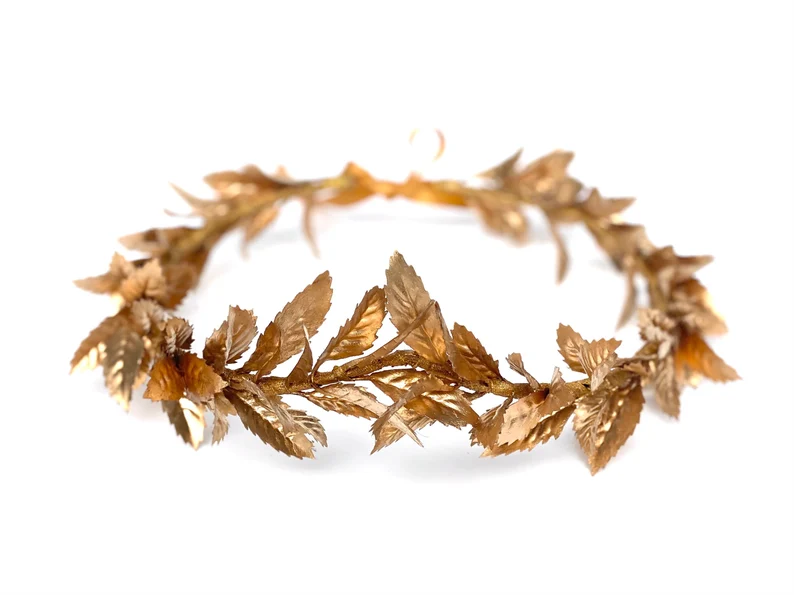
Since antiquity, the laurel wreath has been regarded as a symbol of victory and power. Grecian and Roman gods are often depicted wearing the crown, but especially Apollo the god of music.
In Ovid’s Metamorphoses, after the nymph Daphne rejected Apollo and escaped by turning into a laurel tree, the laurel leaf became a symbol of Apollo, who was often depicted wearing a laurel wreath.
Later on, the victors of the Pythian Games, a series of athletic festivals and musical competitions held in honor of Apollo, were awarded a laurel wreath to honor the god.
In ancient Roman religion, laurel wreathes were always depicted in the hands of Victoria, the goddess of victory. The Corona Triumphalis was the highest medal given to victors of war, and it was made of laurel leaves.
Later, coins with the emperor crowned with laurel wreath became ubiquitous, from coins of Octavian Augustus to those of Constantine the Great.
The symbolism of the laurel wreath survives to this day and is depicted on Olympic medals. In this way, it has become associated with success and academic achievements. In some colleges around the world, graduates receive a laurel wreath, while many printed certificates feature laurel wreath designs.
2. Helm of Awe

Also known as the Aegishjalmur, the Helm of Awe is one of the most powerful symbols in Norse mythology. Not to be confused with the Vegvisir, the Helm of Awe is recognized by its spiked tridents that radiate from the center, which is believed to strike fear into the enemy.
Viking warriors used it as a symbol of bravery and protection on the battlefield, assuring their victory against their enemies.
Many also speculate that the symbol is composed of runes, which add meaning to it. While the arms are said to resemble the Z-rune that’s associated with protection from enemies and victory in battles, the spikes are the Isa runes that literally mean ice.
It’s regarded as a magical symbol that can bring victory and give protection to those who wear it.
3. Tiwaz Rune

Named after the Norse war god Tyr, this rune is associated with victory in battle, as Vikings invoked him in battles to ensure victory.
In the Sigrdrífumál, a poem in the Poetic Edda, it’s said that one who wants to achieve victory must inscribe the rune on his weapon and call the name of Tyr.
Unfortunately, the symbol was later appropriated by the Nazis in their propaganda of creating an idealized Aryan heritage, which gave a negative meaning to the symbol.
However, considering the ancient roots of this symbol, its links as a symbol of victory are much stronger than that of it being a Nazi symbol.
4. Thunderbird
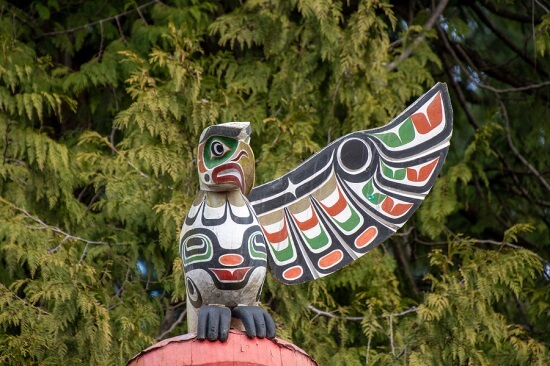
In Native American culture, the thunderbird is thought to be a powerful spirit in the form of a bird. The flapping of its wings brought thunder, while lightning was believed to flash from its eyes and beak.
It generally stands for power, strength, nobility, victory and war.
However, different cultural groups have their own stories about the bird. For the Cherokee tribe, it foretold victory over tribal wars fought on the ground, while the Winnebago people believe that it has the power to grant people great abilities.
5. The Light of Diya

Significant to Hindus, Jains and Sikhs around the world, a diya is an earthen lamp. Its light is believed to represent knowledge, truth, hope and victory.
It’s associated with the Indian festival of Diwali, where people celebrate the victory of good over evil, light over darkness, and knowledge over ignorance.
Diwali is also known as the festival of lights since houses, shops and public spaces are adorned with diyas.
During the festivities, it’s thought that the Divine descends in the form of light to overcome evil, represented by darkness. It’s also believed that the lights will lead goddess Lakshmi to bring wealth and prosperity to people’s homes.
Apart from the ritual of lighting diyas, people also perform cleansing rituals and decorate their homes with patterns made of colored rice.
6. The Victory Banner
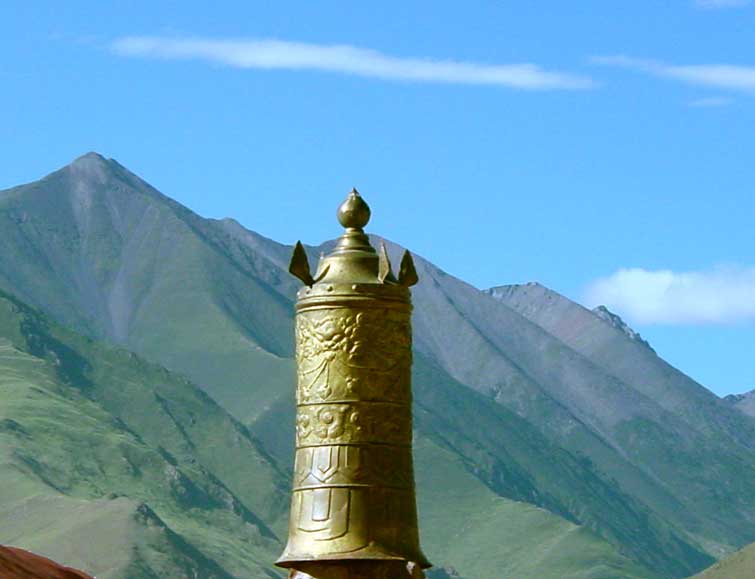
In Sanskrit, the Victory Banner is known as the dhvaja, which means flag or sign. It was originally used as a military standard in ancient Indian warfare, bearing the emblem of the great warriors.
Eventually, Buddhism adopted it as the symbol of Buddha’s victory over ignorance, fear and death. As a symbol of victory, it reminds the people to win over their lust and pride to achieve enlightenment.
7. Palm Branch

In ancient times, the motif of the palm branch symbolized victory, steadfastness and goodness. It was commonly carved into the interiors of temples, and buildings, and even depicted on coins.
Kings and conquerors were welcomed with palm branches. They’re also thought to be the token of triumph and joy during festive occasions.
In Christianity, palm branches represent victory and are often associated with Jesus Christ. It stems from the idea that people waved palm branches in the air as he entered Jerusalem the week before his death.
However, the celebration of Palm Sunday, along with the use of palm branches during the occasion, was only introduced into Western Christianity by the 8th century.
In Christian tradition, Palm Sunday is the Sunday before Easter and the first day of Holy Week. In some churches, it begins with a blessing and procession of palms and then a reading of the Passion, which revolves around the life, trial and execution of Jesus.
In other churches, the day is celebrated by giving palm branches without ritual ceremonies.
8. A Ship’s Wheel

One of the most popular symbols of the nautical world, a ship’s wheel can symbolize victory, life’s path and adventures.
Since it can change the direction of the boat or ship, many use it as a reminder of finding the right path and making the right decisions.
Many also associate it with victory as they come towards their goals and aspirations in life.
9. V for Victory

Since World War II, the V sign has been used by warriors and peacemakers to symbolize victory, peace and resistance. In 1941, resisters in German-occupied regions used the symbol to show their unconquerable will.
Winston Churchill, the former Prime Minister of the United Kingdom, even used the symbol to represent the battle against their enemy. His campaign associated the symbol with the Dutch term vrijheid, which means freedom.
Soon, the presidents of the United States used the V sign to celebrate their electoral victories. By the time of the Vietnam War, it was widely used by the antiwar movement, protesters and college students as a symbol of opposition.
The V sign became a cultural phenomenon in East Asia when a famous figure skater habitually flashed the hand gesture during the 1972 Olympics in Japan.
Japanese media and advertising gave the symbol its biggest boost, making it a popular gesture in photos, especially in Asia.
10. St. George’s Ribbon
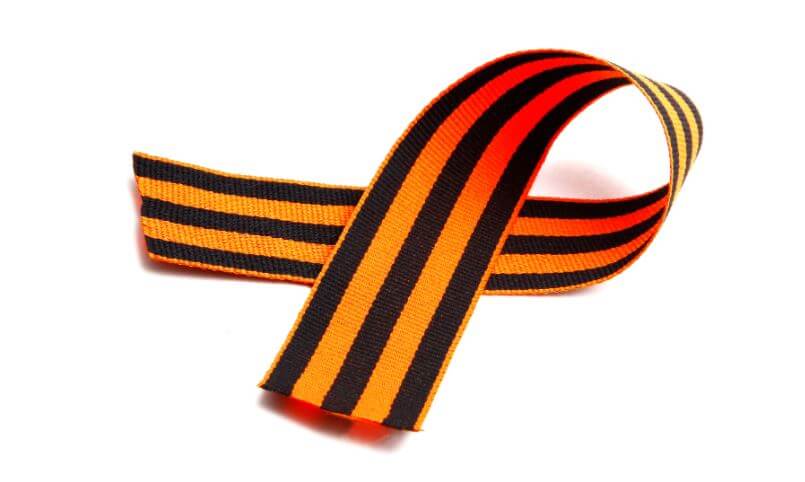
In post-Soviet countries, the black-and-orange ribbon stands for the World War II victory over Nazi Germany, known as the Great Patriotic War. The colors are thought to represent fire and gunpowder, which are also derived from the colors of the Russian imperial coat of arms.
St. George’s ribbon was part of the Order of Saint George, the highest military award in Imperial Russia in 1769, established under Empress Catherine the Great. The order didn’t exist during WWII because it was abolished after the Revolution in 1917 and only revived in 2000 when it was re-introduced in the country.
Each year, in the weeks leading up to the Victory Day celebrations, Russians wear St. George ribbons to celebrate the victory of the war and symbolize military valor.
The ribbon isn’t unique in its design, as there are other similar ribbons that exist, such as the Guards Ribbon. The same colors of St. George’s ribbon are used on the medal “For the Victory Over Germany,” which was awarded to the victorious military and civilian personnel of the Second World War.
Wrapping Up
The term victory conjures the images of battles, but it can also be associated with spiritual warfare and finding the purpose of life.
If you’re fighting your own battles, these symbols of victory will inspire and motivate you on your journey.
Similar Articles:
12 Significant Symbols of Democracy and Their Meanings
11 Powerful Symbols of War and Their Meanings
Top 19 Symbols of Leadership from Around the World








